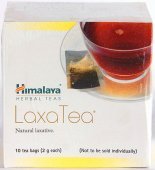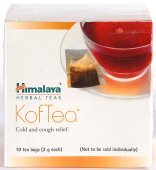Yashtimadhu, Yaṣṭimadhu, Yashti-madhu, Yaṣṭīmadhu: 13 definitions
Introduction:
Yashtimadhu means something in Hinduism, Sanskrit, Marathi, biology. If you want to know the exact meaning, history, etymology or English translation of this term then check out the descriptions on this page. Add your comment or reference to a book if you want to contribute to this summary article.
The Sanskrit terms Yaṣṭimadhu and Yaṣṭīmadhu can be transliterated into English as Yastimadhu or Yashtimadhu, using the IAST transliteration scheme (?).
In Hinduism
Ayurveda (science of life)
Cikitsa (natural therapy and treatment for medical conditions)
Source: Wisdom Library: Ayurveda: CikitsaYaṣṭimadhu (कुलथी):—Another name for Madhuka (Glycyrrhiza glabra), a species of medicinal plant and used in the treatment of fever (jvara), as described in the Jvaracikitsā (or “the treatment of fever”) which is part of the 7th-century Mādhavacikitsā, a Sanskrit classical work on Āyurveda. It can also be spelled as Yaṣṭimadhuka (यष्टिमधुक).
Kalpa (Formulas, Drug prescriptions and other Medicinal preparations)
Source: Ancient Science of Life: Yogaśataka of Pandita VararuciYaṣṭimadhu (यष्टिमधु) refers to a medicinal plant known as Glycyrrhiza glabra Linn., and is mentioned in the 10th century Yogaśataka written by Pandita Vararuci.—The Yogaśataka of Pandita Vararuci is an example of this category. This book attracts reader by its very easy language and formulations which can be easily prepared and have small number of herbs (viz., Yaṣṭimadhu). It describes only those formulations which are the most common and can be used in majority conditions of diseases.
Yaṣṭimadhu (Glycyrrhiza glabra Linn.) powder with honey and ghee with Anupāna of cow milk is indicated for Vājīkaraṇa (aphrodisiac).
Source: Shodhganga: Edition translation and critical study of yogasarasamgrahaYaṣṭimadhu (यष्टिमधु) is another name for “Yaṣṭī” and is dealt with in the 15th-century Yogasārasaṅgraha (Yogasara-saṅgraha) by Vāsudeva: an unpublished Keralite work representing an Ayurvedic compendium of medicinal recipes. The Yogasārasaṃgraha [mentioning yaṣṭimadhu] deals with entire recipes in the route of administration, and thus deals with the knowledge of pharmacy (bhaiṣajya-kalpanā) which is a branch of pharmacology (dravyaguṇa).

Āyurveda (आयुर्वेद, ayurveda) is a branch of Indian science dealing with medicine, herbalism, taxology, anatomy, surgery, alchemy and related topics. Traditional practice of Āyurveda in ancient India dates back to at least the first millenium BC. Literature is commonly written in Sanskrit using various poetic metres.
Biology (plants and animals)
Source: Wisdom Library: Local Names of Plants and DrugsYastimadhu [ಯಷ್ಟಿಮಧು] in the Kannada language is the name of a plant identified with Glycyrrhiza glabra from the Fabaceae (Pea) family. For the possible medicinal usage of yastimadhu, you can check this page for potential sources and references, although be aware that any some or none of the side-effects may not be mentioned here, wether they be harmful or beneficial to health.
Source: Google Books: CRC World Dictionary (Regional names)Yashtimadhu in India is the name of a plant defined with Glycyrrhiza glabra in various botanical sources. This page contains potential references in Ayurveda, modern medicine, and other folk traditions or local practices It has the synonym Amicia glandulosa Kunth (among others).
Example references for further research on medicinal uses or toxicity (see latin names for full list):
· Advances in Plant Taxonomy in Northwest China (1992)
· Caryologia (1990)
· Diagnoses plantarum orientalium novarum (1856)
· Anales del Jardín Botánico de Madrid (1988)
· Species Plantarum (1753)
· Bulletin of Botanical Research (1989)
If you are looking for specific details regarding Yashtimadhu, for example extract dosage, health benefits, diet and recipes, pregnancy safety, side effects, chemical composition, have a look at these references.

This sections includes definitions from the five kingdoms of living things: Animals, Plants, Fungi, Protists and Monera. It will include both the official binomial nomenclature (scientific names usually in Latin) as well as regional spellings and variants.
Languages of India and abroad
Marathi-English dictionary
Source: DDSA: The Molesworth Marathi and English Dictionaryyaṣṭimadhu (यष्टिमधु).—m S Licorice, or the root of Abrus precatorius which is used for it.
Marathi is an Indo-European language having over 70 million native speakers people in (predominantly) Maharashtra India. Marathi, like many other Indo-Aryan languages, evolved from early forms of Prakrit, which itself is a subset of Sanskrit, one of the most ancient languages of the world.
Sanskrit dictionary
Source: DDSA: The practical Sanskrit-English dictionaryYaṣṭimadhu (यष्टिमधु) or Yaṣṭīmadhu (यष्टीमधु).—n.,
Yaṣṭimadhu is a Sanskrit compound consisting of the terms yaṣṭi and madhu (मधु).
Source: Cologne Digital Sanskrit Dictionaries: Shabda-Sagara Sanskrit-English DictionaryYaṣṭimadhu (यष्टिमधु).—n. (-dhu) Liquorice, or the root of the Abrus precatorius. E. yaṣṭi a stick, and madhu honey; also with kan added, fem. form yaṣṭimadhukā; and with the final of the first word long yaṣṭīmadhu .
Source: Cologne Digital Sanskrit Dictionaries: Monier-Williams Sanskrit-English Dictionary1) Yaṣṭimadhu (यष्टिमधु):—[=yaṣṭi-madhu] [from yaṣṭi] n. liquorice, [cf. Lexicographers, esp. such as amarasiṃha, halāyudha, hemacandra, etc.]
2) Yaṣṭīmadhu (यष्टीमधु):—[=yaṣṭī-madhu] [from yaṣṭī > yaṣṭi] n. liquorice, [Suśruta]
Source: Cologne Digital Sanskrit Dictionaries: Yates Sanskrit-English DictionaryYaṣṭimadhu (यष्टिमधु):—[yaṣṭi-madhu] (dhu) 2. n. Liquorice.
[Sanskrit to German]
Sanskrit, also spelled संस्कृतम् (saṃskṛtam), is an ancient language of India commonly seen as the grandmother of the Indo-European language family (even English!). Closely allied with Prakrit and Pali, Sanskrit is more exhaustive in both grammar and terms and has the most extensive collection of literature in the world, greatly surpassing its sister-languages Greek and Latin.
Kannada-English dictionary
Source: Alar: Kannada-English corpusYaṣṭimadhu (ಯಷ್ಟಿಮಧು):—[noun] the plant Glycyrrhiza glabra ( = G. glandulifera) of Papilionaceae family.
Kannada is a Dravidian language (as opposed to the Indo-European language family) mainly spoken in the southwestern region of India.
See also (Relevant definitions)
Partial matches: Yashti, Madhu, Matu.
Starts with: Yashtimadhuka, Yashtimadhukadi.
Full-text: Yashtimadhuka, Madhuyashtika, Svara, Tiktaparvan, Vamana, Vajikarana, Glycirrhiza glabra, Yashtika, Pancakarma, Yashti.
Relevant text
Search found 16 books and stories containing Yashtimadhu, Yashti-madhu, Yaṣṭi-madhu, Yasti-madhu, Yaṣṭī-madhu, Yaṣṭimadhu, Yastimadhu, Yaṣṭīmadhu; (plurals include: Yashtimadhus, madhus, Yaṣṭimadhus, Yastimadhus, Yaṣṭīmadhus). You can also click to the full overview containing English textual excerpts. Below are direct links for the most relevant articles:
Sushruta Samhita, Volume 6: Uttara-tantra (by Kaviraj Kunja Lal Bhishagratna)
Chapter XLV - Symptoms and Treatment of Hemorrhage (Rakta-pitta) < [Canto III - Kaya-chikitsa-tantra (internal medicine)]
Chapter X - Treatment of Pittaja Ophthalmia < [Canto I - Shalakya-tantra (ears, eyes, nose, mouth and throat)]
Chapter XII - Treatment of Raktaja Ophthalmia < [Canto I - Shalakya-tantra (ears, eyes, nose, mouth and throat)]
The Practice Manual of Noble Tārā Kurukullā (by Dharmachakra Translation Committee)
Chapter 4 < [Appendix - Sanskrit Text]
Sushruta Samhita, volume 4: Cikitsasthana (by Kaviraj Kunja Lal Bhishagratna)
Chapter XXV - The medical treatment of a variety of diseases
Chapter XVI - The medical treatment of Abscesses and Tumours
Sushruta Samhita, Volume 5: Kalpasthana (by Kaviraj Kunja Lal Bhishagratna)
Chapter I - Preserving food and drink from poison
Chapter V - The medical treatment of snake bites
Maha Prajnaparamita Sastra (by Gelongma Karma Migme Chödrön)
Story of the brahmin who unwittingly ate disgusting cakes < [Chapter XXXVII - The Ten Concepts]
Charaka Samhita and Sushruta Samhita (by Nayana Sharma)
Trade In Medicinal Drugs < [Chapter 7]
Related products
(+15 more products available)





